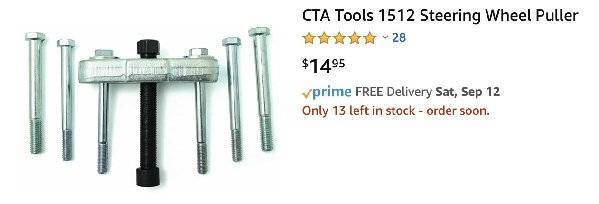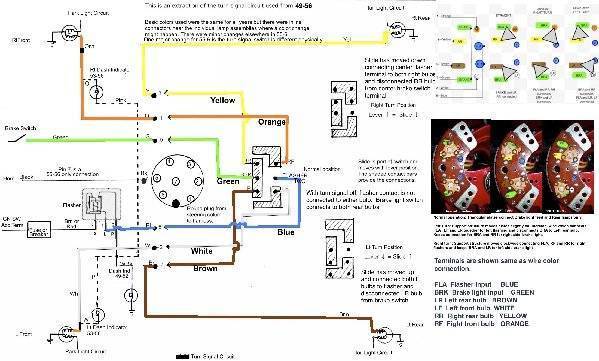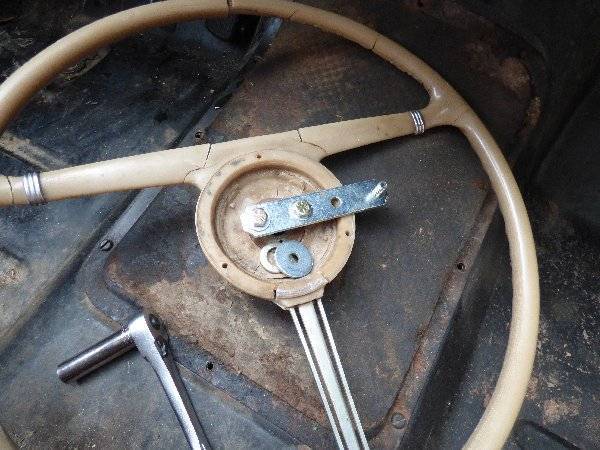|
Re: KPack's 1954 Panama
|
||||
|---|---|---|---|---|
|
Home away from home
|
I just saw the comment made by Ken P about the carburetor during the compression test. That got me thinking about whether the rich condition is/was nothing more than ' too much choke'.
Posted on: 2020/9/6 13:24
|
|||
|
||||
|
Re: KPack's 1954 Panama
|
||||
|---|---|---|---|---|
|
Home away from home

|
David - That is good advice, thank you. That is the route I was planning to take (mark initial position, close the screws while counting turns, back them back out, etc) to see how close I am to spec. It's good to hear I was thinking correctly.
I don't know that the rich condition is solely due to choke. I close the choke valve (manual) when starting cold, but then I open it all the way up after the car is running. The exhaust smells of fuel even after the engine has been warmed up and run at 25 mph for a number of minutes. It seems like it's running rich all the time to my untrained senses. I'll tackle the adjustment/investigation this week and see what I find. -Kevin
Posted on: 2020/9/6 14:15
|
|||
|
||||
|
Re: KPack's 1954 Panama
|
||||
|---|---|---|---|---|
|
Home away from home

|
Spending some time in the evenings working on the Panama after the kids go to bed. One of the many things I'm trying to get done is the lighting. I have much of it working, but still need to wrap it up.
I fixed the front parking lights (repair the cut wires). The turn indicators do not work anywhere (front, back, dash indicators), which tells me the problem is probably in the turn signal switch in the steering column. If the switch is anything like the headlight switch in the dash it is probably all corroded and needs a good cleaning. Plus there is some sand that got in there that needs to get cleaned out. And the transmission gear indicator light does not work, so I have to get in there to replace that. How do I get the steering wheel off? The manual talks about a special puller, but surely there's something more generic I can use? -Kevin
Posted on: 2020/9/10 15:57
|
|||
|
||||
|
Re: KPack's 1954 Panama
|
||||
|---|---|---|---|---|
|
Forum Ambassador
|
You may be able to rent something from a local parts store or the type shown is fairly inexpensive at Amazon or ebay. On the inexpensive puller you may also need to buy a couple more screws to fit the threaded holes in the wheel hub. You could make something similar to the factory puller using a flat but thick piece of metal drilled for the hub screws and threaded for the center pull bolt.
Definitely get the correct type puller or you risk damage to the end of the shaft or the threads which will make replacing the wheel very difficult. To remove the wheel, use your palm to push down on the horn emblem and then twist slightly CCW to release it. There is a rubber cushion under the emblem which if deteriorated and became sticky can cause issues. Once the emblem is off remove the 3 screws holding the horn ring assy to expose the nut. Disconnect the horn wire from the inline connector at the end of the steering box and tie a long string to it. Pull the contact, wire and string up out of the shaft. Cut off the string but use grease or something on the inside of the shaft so you can tuck the string down and out of the way but not have it fall back down the shaft. Before going farther, measure the gap between the wheel and the shroud so you get the wheel back to near the same distance so the pins on the hub can reach and release the turn signal switch cancel hooks. Normally the gap is about 1/16 to 1/8". Remove the nut or just loosen it several turns to get a bit of space for the wheel to slide up off the splines a bit. Unless you have the correct puller with a wide support that lays over and protects the threads I would suggest you try and leave the nut on the end of the shaft so the threads do not get damaged. If nut has to come off for enough room for the puller place something over the shaft so the end does not mushroom or threads collapse. Once the splines break free or turning the puller bolt has eased then you can remove the nut. Just replace the wheel in the reverse order using the string to pull the wire back down. You may need to wrap a thin piece of tape over the string and wire end to make a smoothed taper so the wire end will start thru and more easily pass thru a narrow channel at the box. On the turn signals, here is an extraction showing the 51-4 switch and the overall circuit. Switch physically changed in 55-6 but electrically, it is the same. The sand could have done a job on the switch as could old age warping of a phenolic support board causing a contact to not be in line with the others and make a connection. Corrosion buildup on the contacts from just sitting could also be the issue.
Posted on: 2020/9/10 17:06
|
|||
|
Howard
|
||||
|
||||
|
Re: KPack's 1954 Panama
|
||||
|---|---|---|---|---|
|
Home away from home

|
Kevin, how is the replacement windshield header install coming along?
Posted on: 2020/9/10 18:28
|
|||
|
Paul
www.studebakerskytop.com |
||||
|
||||
|
Re: KPack's 1954 Panama
|
||||
|---|---|---|---|---|
|
Home away from home
|
Kevin, here's what I used to remove my Steering Wheels. I would put the nut back on and tighten down the two bolts, a little at a time. And it would slowly pop off.
Oops! In this photo I use those two washers and a wrench as a spacer to tighten down. Wes
Posted on: 2020/9/10 19:48
|
|||
|
||||
|
Re: KPack's 1954 Panama
|
||||
|---|---|---|---|---|
|
Home away from home
|
That would work in an emergency but, as it isn't one, I would opt for the proper puller. They are inexpensive and will do the job easily without risk of damage.
Posted on: 2020/9/10 20:08
|
|||
|
||||
|
Re: KPack's 1954 Panama
|
||||
|---|---|---|---|---|
|
Home away from home
|
I love a good excuse to buy a new tool and then tell my wife all the money I just saved us. I would buy the puller too. Don't try this at home: Years ago I was in a You Pull It salvage yard with a friend helping him get trim off a '55 Merc when he noticed the steering wheel was better than his. I remembered reading a technique that could remove wheels with a hammer. I doubted how well it would work but neither if us had a puller. One person sits in the driver's seat pulling on the wheel while the second smacks the shaft with a hammer. It amazed me how quick it popped off the splines. Prior to we did a few rounds of rock paper scissors to determine who would have a hammer swinging near their face. I would not do this with your car but for a salvage yard wheel works great. Even though I didn't care about the car in this case I used my trusty brass hammer that was made from a boat inboard prop shaft.
Mike
Posted on: 2020/9/10 20:35
|
|||
|
1948 Custom Eight Victoria Convertible
Others: 1941 Cadillac Series 62 Deluxe Convertible Coupe 1956 Oldsmobile 88 Sedan |
||||
|
||||
|
Re: KPack's 1954 Panama
|
||||
|---|---|---|---|---|
|
Home away from home
|
Yes, with two day service, it's no problem getting a special tool and I also like telling the wife about how much money I save just like when she goes out shopping and starts telling me how much she's saved.
But sometimes the old country boy comes out in me. Grew up 8 m8les from a small town and 36 miles from the big city. Just couldn't run to town for parts, repaired a lot of stuff on the fly. O'well just a thought, most steering wheels aren't that hard to get off. Wes
Posted on: 2020/9/11 8:42
|
|||
|
||||


 (56.64 KB)
(56.64 KB)










